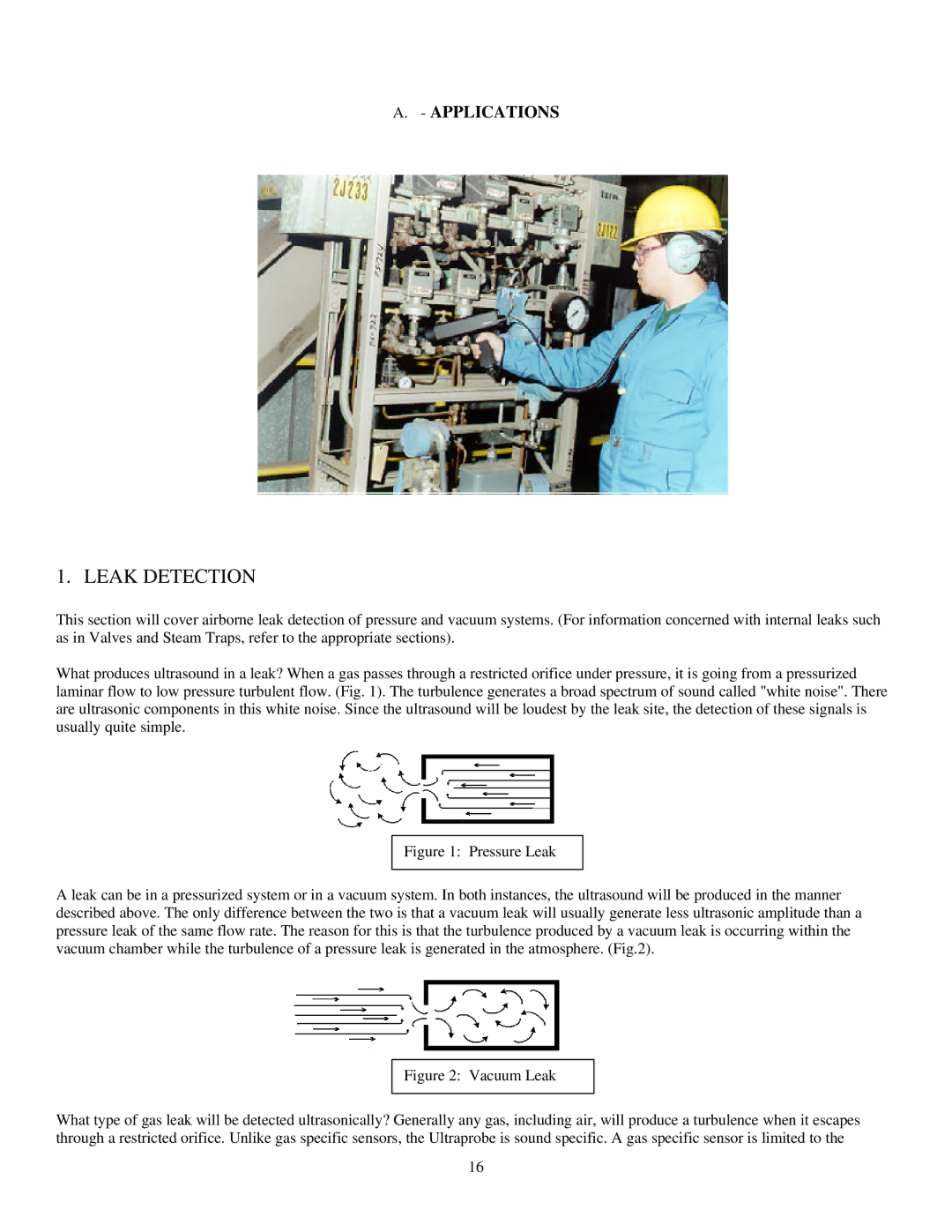
A.- APPLICATIONS
1. LEAK DETECTION
This section will cover airborne leak detection of pressure and vacuum systems. (For information concerned with internal leaks such as in Valves and Steam Traps, refer to the appropriate sections).
What produces ultrasound in a leak? When a gas passes through a restricted orifice under pressure, it is going from a pressurized laminar flow to low pressure turbulent flow. (Fig. 1). The turbulence generates a broad spectrum of sound called "white noise". There are ultrasonic components in this white noise. Since the ultrasound will be loudest by the leak site, the detection of these signals is usually quite simple.
Figure 1: Pressure Leak
A leak can be in a pressurized system or in a vacuum system. In both instances, the ultrasound will be produced in the manner described above. The only difference between the two is that a vacuum leak will usually generate less ultrasonic amplitude than a pressure leak of the same flow rate. The reason for this is that the turbulence produced by a vacuum leak is occurring within the vacuum chamber while the turbulence of a pressure leak is generated in the atmosphere. (Fig.2).
Figure 2: Vacuum Leak
What type of gas leak will be detected ultrasonically? Generally any gas, including air, will produce a turbulence when it escapes through a restricted orifice. Unlike gas specific sensors, the Ultraprobe is sound specific. A gas specific sensor is limited to the
16
